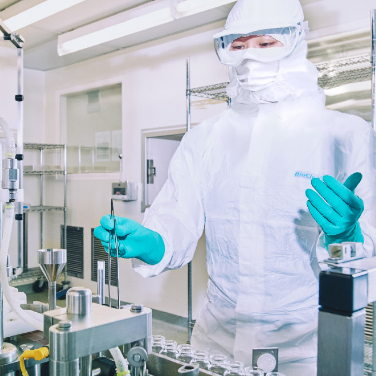Navigating Annex 1 PPE Guidelines
The intricacies of the European Union Good Manufacturing Practice (GMP) for Medicinal Products for Human and Veterinary Use Annex 1 guidelines can be confusing and overwhelming. In this article, we’ll explore some of the details of Annex 1 and point you to Ansell™ hand and body protection solutions and information to help your cleanroom meet and exceed these stringent standards. Understanding and adhering to Annex 1 PPE guidelines for sterile environments is critical to your business. Following best practices and investing in proper protective clothing can help you maintain the safety of your personnel and the safety and quality of your products.
What Is Annex 1?
Annex 1 is a legally binding part of EU GMP that provides guidelines and information relating to the manufacture of sterile medicinal products. The latest version of Annex 1 was published on August 25, 2022 and will be implemented on August 25, 2023.
What’s Covered?
Annex 1 provides comprehensive guidance for the design, construction, and maintenance of facilities and equipment used to manufacture medicinal products. It also guides the production process, quality control, and documentation.
Annex 1 applies to all sterile medicinal products manufactured in the EU and U.K. and to products manufactured elsewhere and exported into the EU and U.K. It applies to:
- Finished products in any size or combination
- Active substances
- Packaging materials
- Any manufacturing processes
- Any manufacturing technologies
- Any manufacturing designed to produce a sterile product
- The design and control of facilities, equipment, systems, and procedures
Contamination Risks
Contamination within controlled environments used for aseptic processing can come from raw materials, packaging, equipment, fluids, tools, processes, and—the most significant source of contamination—people. Microorganisms are continuously shed from hair, skin, eyes, and mucus membranes.1 When people are moving around in controlled and sterile environments, they can shed up to 10 times more particles than when they are sitting or at rest.
Annex 1 Part 7.18: Activities in clean areas that are not critical to the production processes should be kept to a minimum, especially when aseptic operations are in progress.
The movement of personnel should be slow, controlled, and methodical to avoid excessive shedding of particles and organisms from over-vigorous activity. Operators performing aseptic procedures must adhere to the proper technique at all times to prevent any changes in air currents that may introduce air of lower quality into the critical zone.
The movement of personnel near or adjacent to critical zones should be restricted and the path of unidirectional (first air) airflow should remain unobstructed. A review of airflow visualization studies as part of your training program can help the team understand the issues.
Find Out More
See our ad on pages 14 and 15 of Lab Reporter Issue 2, 2023 to learn more about Ansell products that can help you meet Annex 1 guidelines, or contact our experts to find the right PPE solutions for your workplace. Visit fishersci.com/ansell to access resources such as our Annex 1 white paper and other information, including:
- Personnel: Annex 1, Part 7 Guidance on Cleanroom Garments, Protective Clothing & Donning Procedures
- The Importance of Barrier Technologies
- Ansell PPE Packaging & Sterilization: Safeguarding Cleanroom Production
You’ll learn how innovative Ansell products can revolutionize your cleanroom operations while helping you comply with the latest regulatory requirements.
- Brandes, R. (2012, April, 12). Aseptic Processing: Qualification of Personnel. Mass & Peither AG-GMP Publishing.

